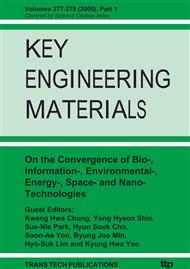p.606
p.612
p.618
p.625
p.631
p.637
p.644
p.649
p.654
Radiological Impact of the PARR-1 Operation on the Environment
Abstract:
This paper presents a study related to the assessment of the radiological impact on the environment due to the operation of the Pakistan Research Reactor-1 (PARR-1) at the Pakistan Institute of Nuclear Sciences and Technology (PINSTECH), Islamabad. The parameters studied include the radioactivity releases in a gaseous form and also those originating from the liquid and solid wastes produced due to the operation of this research facility. The analysis is based on the environmental monitoring data for the last 10 years (1992-2002) and the conclusions have been drawn for the impact of the PARR-1 operation on the occupational workers as well as the general public living in the vicinity of the reactor site. Further, on the basis of this data, yearly average doses and the cumulative doses for the expected life of PARR-1, due to different radiation sources have been estimated. The analysis indicated that the maximum yearly doses at ground level for the occupational workers as well as for the public are a fraction of the International Atomic Energy Agency’s (IAEA) defined limiting values. It is, therefore, concluded that the impact of the PARR-1 normal operation on the environment is negligible and it can be regarded as “ safe to the public as well as the occupational workers”.
Info:
Periodical:
Pages:
631-636
Citation:
Online since:
January 2005
Authors:
Price:
Сopyright:
© 2005 Trans Tech Publications Ltd. All Rights Reserved
Share:
Citation:


